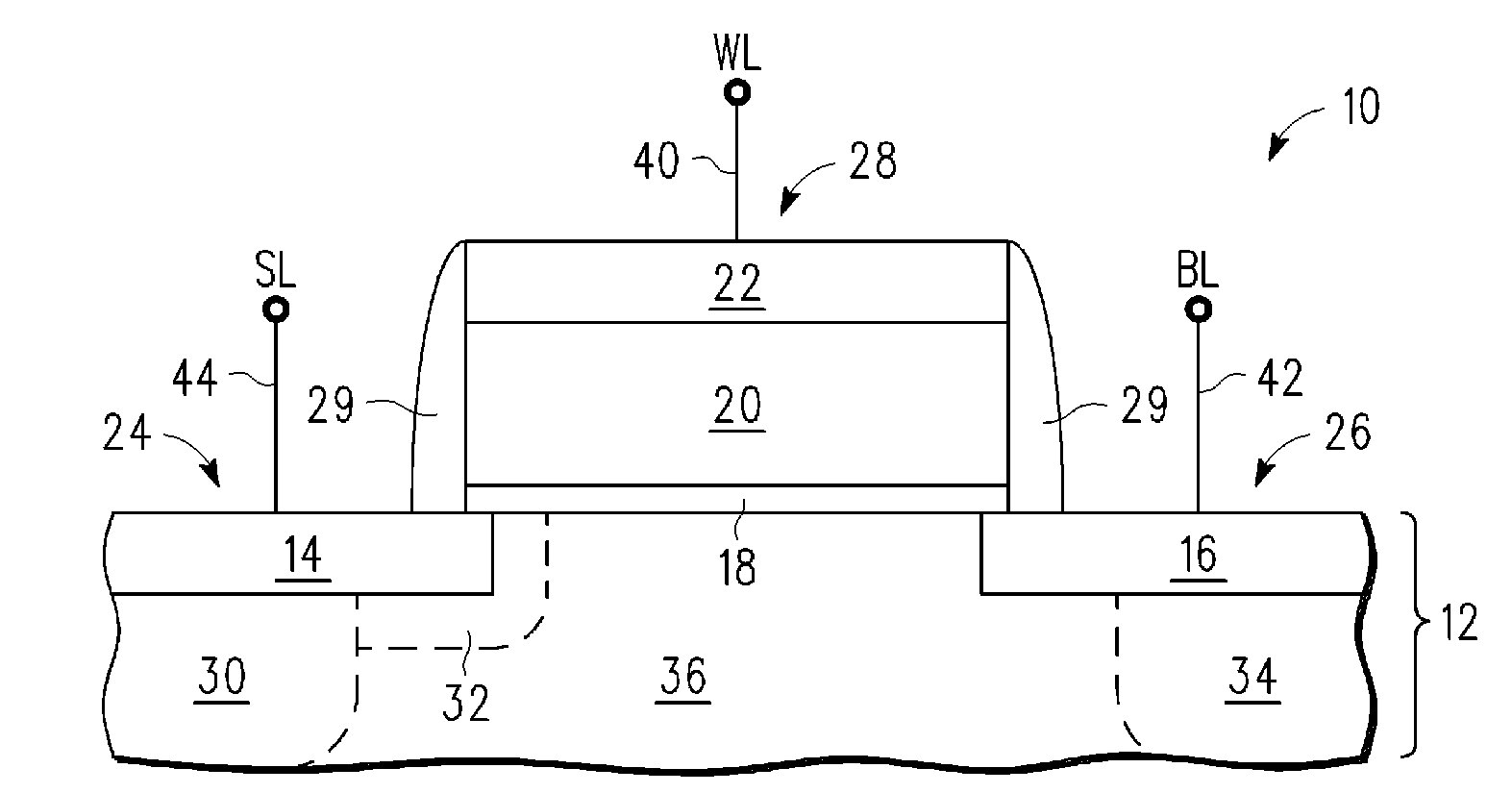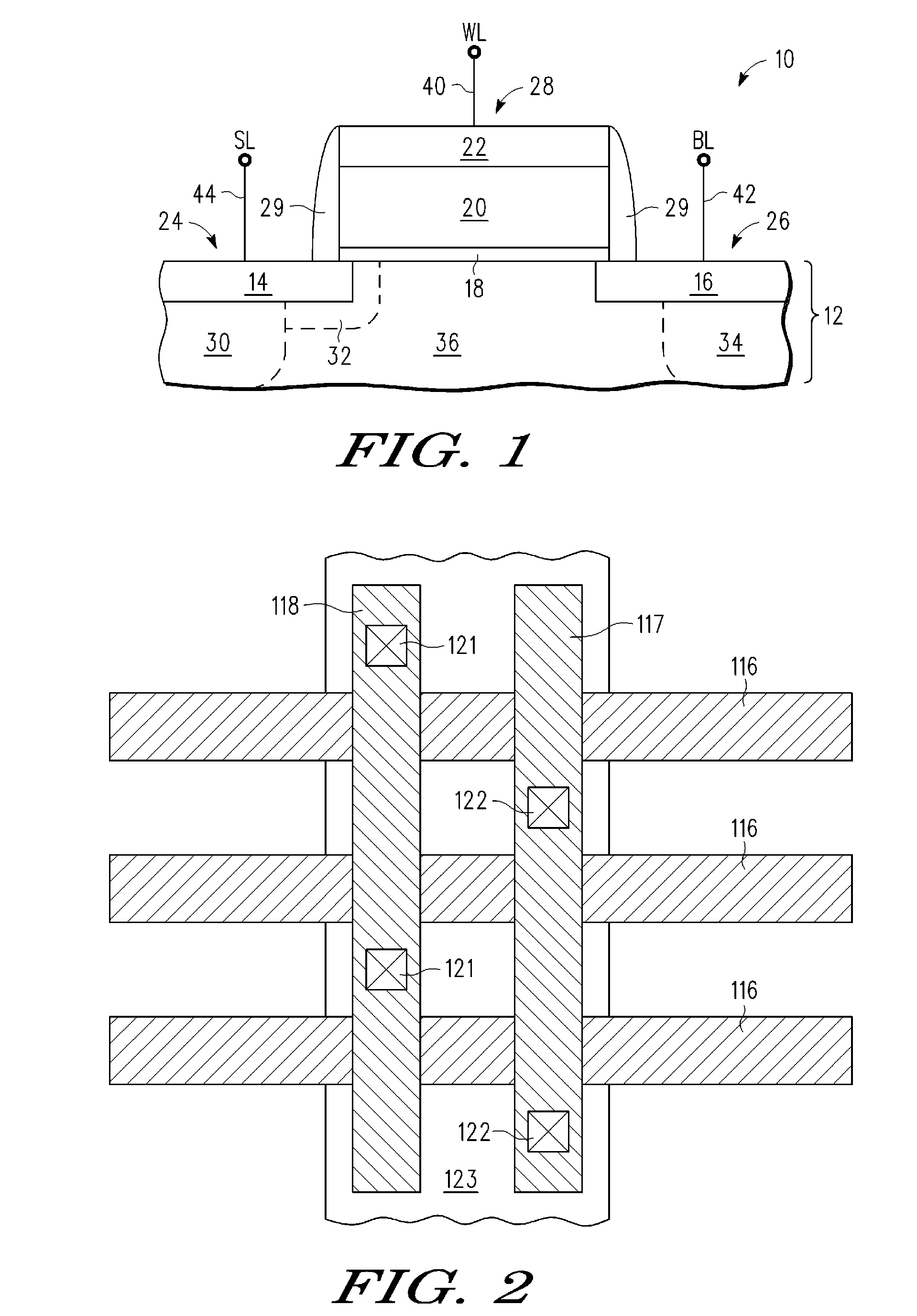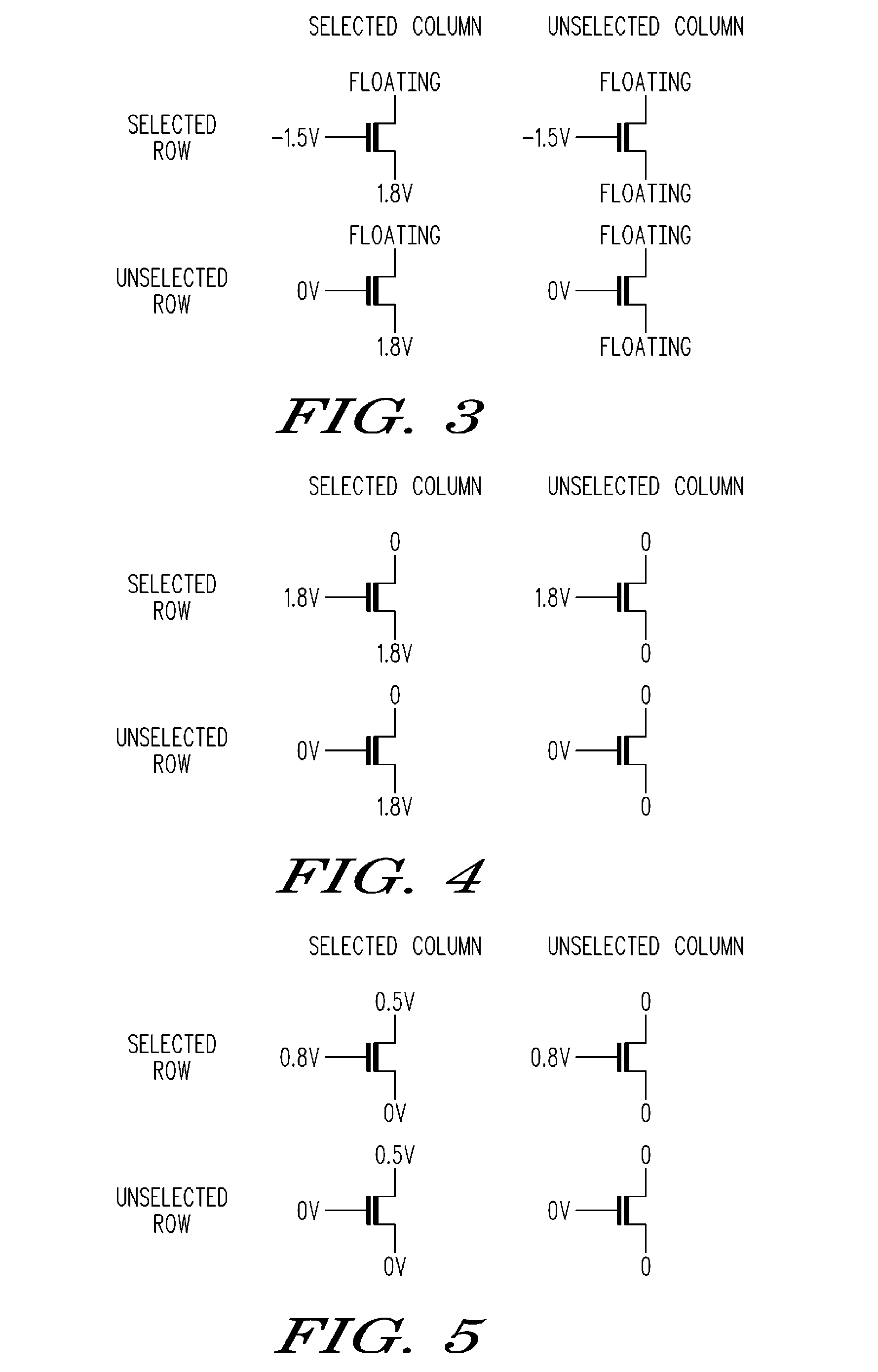One transistor dram cell structure and method for forming
a dram cell and transistor technology, applied in semiconductor devices, digital storage, instruments, etc., can solve the problems of too slow erase, too slow write, and insufficient speed of writing and erasing
- Summary
- Abstract
- Description
- Claims
- Application Information
AI Technical Summary
Benefits of technology
Problems solved by technology
Method used
Image
Examples
Embodiment Construction
[0011]For a thorough understanding of the subject One Transistor DRAM Cell Structure and Method for Forming, reference is made to the following Detailed Description, which includes the appended Claims, in conjunction with the above-described Drawings.
[0012]In a manner that will become eminently apparent below, the subject invention inheres, in one form, in a structure and method for programming a single-transistor capacitorless (1T / 0C) memory cell. Specifically, the memory cell, which comprises a floating (i.e., isolated) body region, is programmed by modulating the threshold voltage, VT, of a MOS transistor that includes the body region and respective drain and source regions. VT modulation is effected through the accumulation, as a result of band-to-band tunneling (BTBT), of majority carriers in the body region. Programming the memory cell in this manner is preferable to other known techniques in that, inter alia, generation of majority carriers by BTBT demands appreciably lower d...
PUM
 Login to View More
Login to View More Abstract
Description
Claims
Application Information
 Login to View More
Login to View More - R&D
- Intellectual Property
- Life Sciences
- Materials
- Tech Scout
- Unparalleled Data Quality
- Higher Quality Content
- 60% Fewer Hallucinations
Browse by: Latest US Patents, China's latest patents, Technical Efficacy Thesaurus, Application Domain, Technology Topic, Popular Technical Reports.
© 2025 PatSnap. All rights reserved.Legal|Privacy policy|Modern Slavery Act Transparency Statement|Sitemap|About US| Contact US: help@patsnap.com



